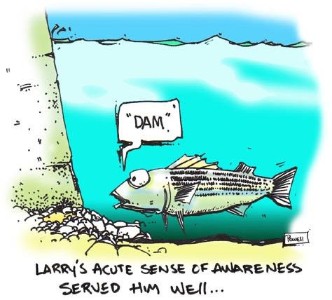A damned energy loss for migratory fishes: dams!by Manon Salerno
Published by the June 10, 2019 on 9:42 AM
Many species of fish grow in the sea and breed in rivers. These migratory fish are called anadromous. When a migratory fish is ready to breed, it leaves the sea and up a river to lay watershed upstream. It will find the optimum conditions to reproduce and allow the development of its offspring. But to do so, they spend a lot of energy on the upstream and sometimes, obstacles like dams in their path does not make it easy for them. This is the case of American Shad in the Connecticut River in the United States. Since the 1970s, 4 hydroelectric dams have been built in the river. Even if they are equipped with fish ladders, these obstacles require the Shad more energy to cross them than if they were not present. We know energy availability can be a limiting factor in migration. Thus, in 1999, scientists wanted to understand energy management in these fish, especially when it is modified by the presence of such.

Any organism needs energy to perform the movements / migrations necessary for its life cycle. When they are heading into a period that will not allow them to feed (overwintering, migration), some species store energy, such as the bear before hibernating. For American Shad, this stock has to be created before migration because it will not feed during this move. First, scientists have found these are subcutaneous lipid reserves and skin constitute a special tissue for energy storage, which is rather unusual. Salmon, for example, usually mobilizes lipids from muscles and viscera. In contrast, for migration, somatic tissues (red and white muscles and skin) provide about 90% of the energy required in shad.
Although fish ladders are quite efficient at the upstream for the American Shad, it is sometimes not suitable for other species. In addition, the outmigration can also present risks of mortality (water retention, drop height etc ...). It is therefore essential to remove the dams for which their function is not provided anymore. But in the United States, the erasure of small dams often meets opposition from local communities. Even though many dams have been removed, they represent a strong historical or landscape value for the inhabitants, creating tensions between the supporters of the restoration and the local communities. This situation reminds the context existing in France, where the aesthetic and historical arguments are very powerful. Many dams are attached to mills and water plants of olden times are therefore seen as a "living historical landscape" very characteristic of their landscape. Because of the local character of each operation, an opposition not necessarily collective but influential and well directed, is enough to block some sites.

This post is licensed under a Creative Commons Attribution-ShareAlike 4.0 International License.





